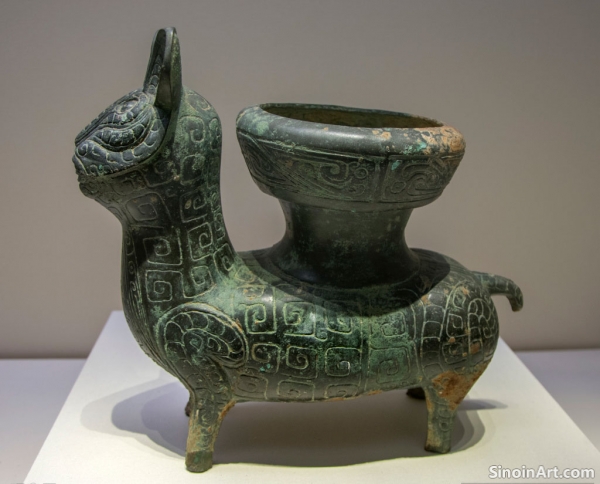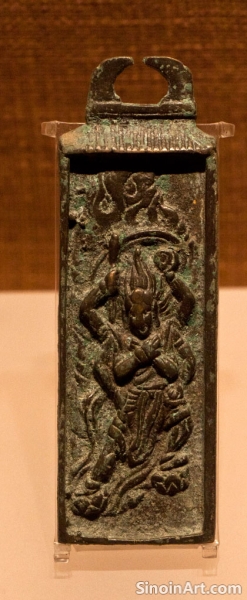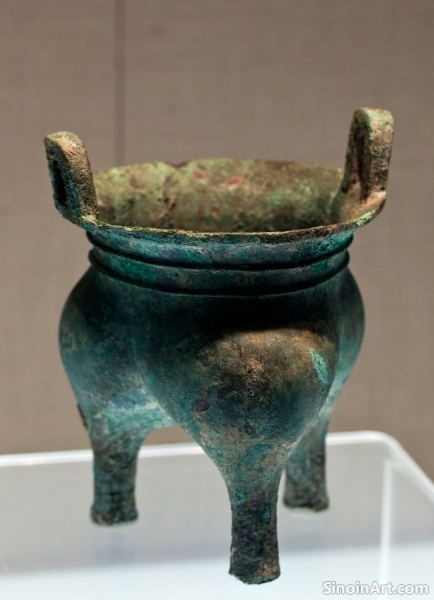The Symbolism in Chinese Bronze Ware: Decoding the Motifs and Patterns
|
The intricate designs and motifs found on Chinese bronze ware are not merely decorative; they possess deep symbolic meanings that reflect the religious beliefs, social values, and worldview of the ancient Chinese. Understanding these symbolic elements is crucial to fully appreciating the cultural significance of these remarkable objects. The designs and symbols on these artifacts provide deep insight into the beliefs of the era.  The taotie motif, a common design element on Shang Dynasty bronzes, is often interpreted as a symbol of power and protection, and it is often depicted as a composite animal figure with fierce features. The taotie was believed to ward off evil and to ensure good fortune. The taotie motif is one of the most recognizable symbols of the ancient Chinese world.  Other common motifs included dragons, phoenixes, and various geometric patterns, each with its own symbolic meaning. The dragon was often associated with power and royalty, while the phoenix often symbolized rebirth and renewal. Each symbol had its own distinct meaning.  The use of specific colors, textures, and spatial arrangements in bronze ware also contributed to its overall symbolic meaning. The combination of design elements is an important aspect of the overall aesthetic. The combination of these design elements created a powerful visual language. By studying the symbolic language of Chinese bronze ware, we gain invaluable insights into the cultural and spiritual beliefs of the ancient Chinese. The patterns and forms of these bronze objects offer powerful ways of engaging with the ideas and values of the past. They provide a direct link to a long gone era. |
Tag : Chinese bronze symbolism, taotie motif, ancient Chinese patterns, bronze art, religious symbols
Related information
- Bronze Ware and the Development of Ancient Chinese Music Theory: The Role of Tuned Instruments
- The Ethical Implications of Owning and Displaying Looted Chinese Bronze Ware
- The Role of Bronze in Ancient Chinese Agriculture: Tools, Irrigation, and Food Production
- The Relationship Between Bronze Vessels and Food Culture in Ancient China
- The Evolution of Bronze Mirror Design: From Early Simplicity to Ornate Patterns and Narrative Scenes
This article explores the influence of bronze ware on the development of ancient Chinese music theory, highlighting the role of tuned instruments, especially bianzhong bells, and their impact on scales, harmonies, and the understanding of musical structure.
This article examines the ethical implications of owning and displaying looted Chinese bronze ware, emphasizing the need for responsible collecting practices, respect for cultural heritage, and a careful understanding of provenance.
This article explores the role of bronze in ancient Chinese agriculture, highlighting its use in creating more effective tools, developing irrigation systems, improving food processing, and its contribution to greater agricultural efficiency and economic development.
This article explores the connection between bronze vessels and food culture in ancient China, highlighting their use in the preparation, presentation, and consumption of meals, and emphasizing the importance of food in both daily life and ancestral rites.
This article explores the evolution of bronze mirror design in ancient China, highlighting the shift from simple forms to more complex designs, including the use of intricate patterns, symbolic imagery, and narrative scenes, demonstrating the interplay between art, technology, and cultural change.